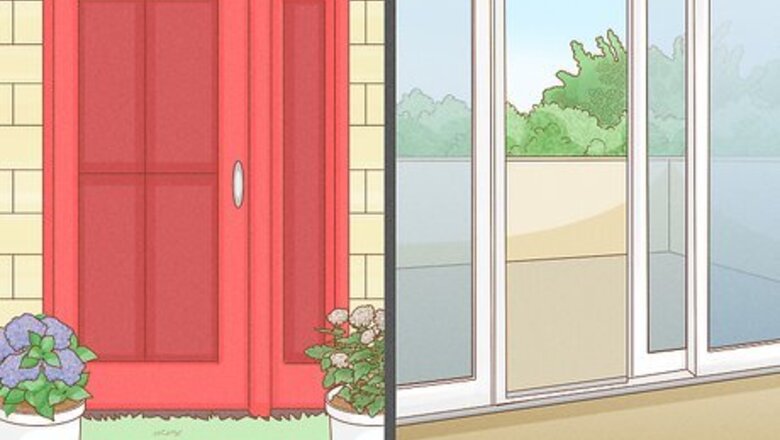
views
- Install a one-way exit tunnel if you know where the squirrels are getting in.
- Make use of noise, lights, and unpleasant scents to encourage the squirrels to vacate your space.
- Once the squirrels are gone, seal up any gaps or openings leading into your home to keep them from getting back in.
Getting the Squirrel to Leave
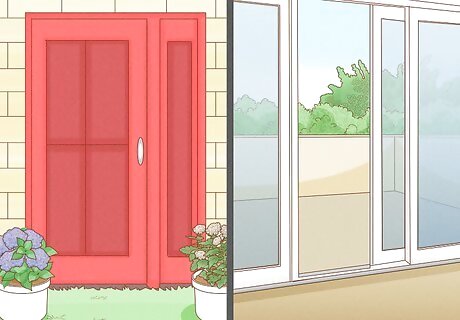
Provide an avenue of escape for the squirrel. Close off all other routes and leave a single exit to your home open, like a wide-open window. If the squirrel got in through a gap in your roof, leave it open. If getting to a window in the same room the squirrel is in puts you too close to the squirrel for your own comfort, you might: Open the window in the room next to the one the squirrel is in, leave the door open to that room, and close off all other routes.
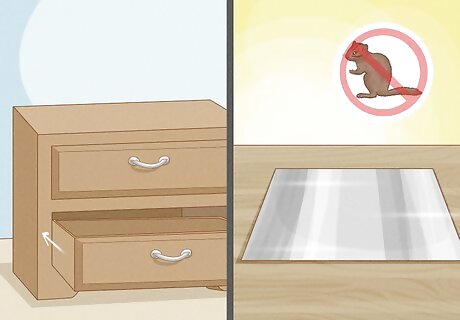
Close off any hiding spots the squirrels might frequent. Drawers, cupboards, and other nooks and crannies comfort squirrels, so don’t make these areas hospitable. Close drawers, have kitchen timers go off at random times to spook the squirrels, or lay out aluminum foil to freak the squirrels out when they step on it. By removing comfort spots, the squirrel will be incentivized to leave.
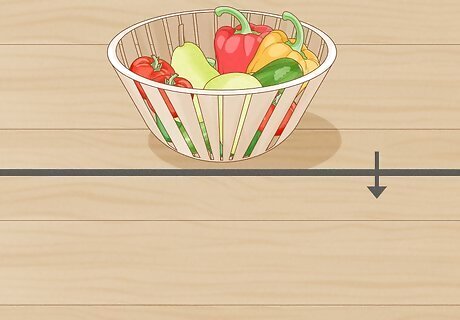
Remove all food sources. Especially in inhospitable weather, like in winter or during a drought, a squirrel may be especially hard to remove if it has a lot of food available. Squirrels, like other rodents, have sharp teeth that can gnaw through even the thickest of food bags. If the food isn’t in safe storage, remove it. They’ll eat basically any veggie, nut, fruit, or meat scrap, so don’t leave any food or garbage out. Is your garbage can sitting just against your home? If so, the squirrel may be going in and out of your home to the garbage can for food. Move the can away from the building.
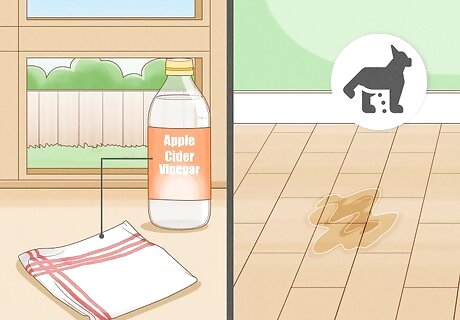
Use lights, noise, and scents to make your home less hospitable. Squirrels, like any animal, are sensitive to certain scents, sounds, and sights. In particular, squirrels might dislike the smell of cider vinegar, so try soaking some rags in the stuff and put them in the squirrel’s area. If you can, sprinkle some predator urine in the area—that will 100% work. You might also leave a radio playing constantly in the room the squirrel is in to drive it out. A bright light left on throughout the day and night can also make your house less appealing to squirrels. You can buy predator urine from farm supply stores or sporting good centers. Soaking rags in a predator’s urine (like a fox or coyote) could lead to your squirrel invader beating a hasty retreat.
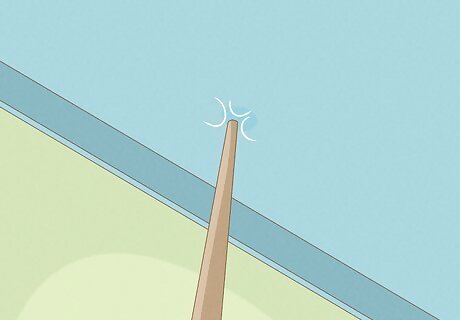
Create loud noises to get squirrels to leave inaccessible spaces. Squirrels in your attic or other narrow spaces, like a wall or crawlspace, can be difficult to get at without close contact. In this case, bang on the rafters and walls. You can also set alarms on spare phones or alarm clocks to go off periodically to freak the squirrels out. Even entering your attic and speaking in a loud voice may be enough to chase your squirrels out of your home. These loud noises will often provoke a squirrel’s flight response, making it flee through the escape path you’ve provided.
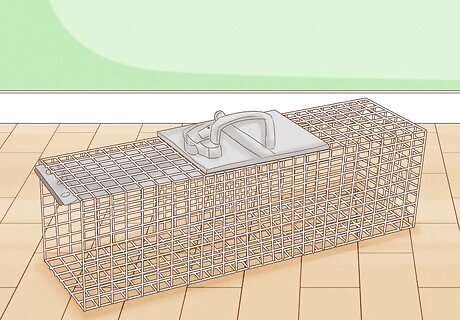
Use a humane trap to catch a live squirrel and relocate it. There are many different kinds of humane traps available. These are specially designed to help remove squirrels from your home. Do not use any glue or lethal traps. The humane traps with automatically closing trap doors are perfect for squirrels. A one-way door is a kind of trap that lures squirrels in but does not let them out. When using this kind of trap, seal up the entrance holes to your home, then release the squirrel into an area at least 1 mi (1.6 km) away. Depending on the kind of trap you buy, setup and squirrel removal may have different procedures. Always be sure to follow the directions that come with your trap for best results. EXPERT TIP Eric McClure Eric McClure wikiHow Staff Writer Eric McClure is an editing fellow at wikiHow where he has been editing, researching, and creating content since 2019. A former educator and poet, his work has appeared in Carcinogenic Poetry, Shot Glass Journal, Prairie Margins, and The Rusty Nail. His digital chapbook, The Internet, was also published in TL;DR Magazine. He was the winner of the Paul Carroll award for outstanding achievement in creative writing in 2014, and he was a featured reader at the Poetry Foundation’s Open Door Reading Series in 2015. Eric holds a BA in English from the University of Illinois at Chicago, and an MEd in secondary education from DePaul University. Eric McClure Eric McClure wikiHow Staff Writer "I’ve had a ton of success getting squirrels out of my attic using this one-way animal trap. Just smear a spoonful of peanut butter on the pressure pad inside the trap and the squirrel won’t be able to help themselves."
Cleanup and Re-Entry Prevention
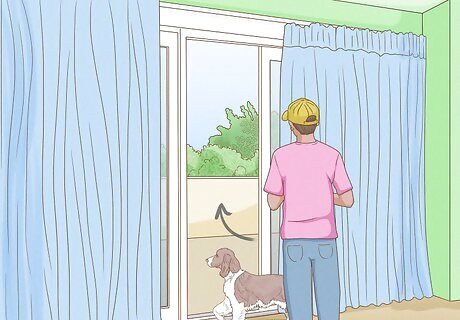
Stay away from the house until the squirrel is gone. Take your pets with you, if you have any. This will prevent any accidental interaction between your pets and the squirrel. As soon as the squirrel realizes that no one else is in the house, it should leave through the escape route you’ve left open if you’ve been sufficiently annoying. Some dogs have been bred to hunt woodland creatures and may work extra hard to get at the squirrel in your home. Leaving this kind of pet unsupervised could result in it escaping its pen/cage/room to hunt the squirrel.
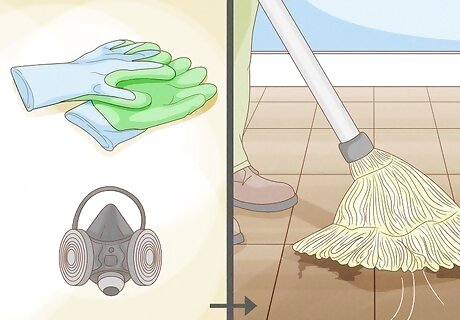
Verify the squirrel is gone and clean the area thoroughly. Once you’ve returned, thoroughly check the room in which the squirrel resided to be sure it is gone. Check surrounding rooms and the rest of your house, just in case the squirrel got around your barrier or found some other route to travel deeper into your house. Squirrels, like many rodents, tend to spread around their urine and feces, so clean any musty area with a general commercial cleaner, gloves, and a mask. Make a little noise when you come home. If you don’t hear any scurrying, the squirrel is gone. Squirrels aren’t like mice—they’ll muster up a storm if they think they’re under threat.
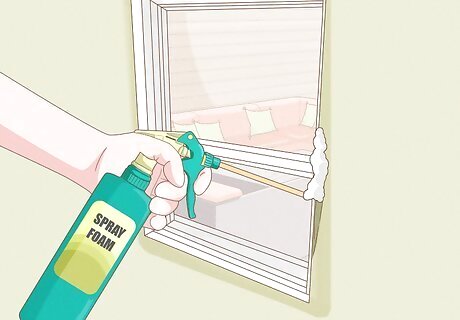
Seal off any entrances the squirrel may have come in through. To prevent more squirrels from making your house their home, close off any entrances the squirrels might use to get back inside. This will require some investigation on your part. In some cases, you may need to replace rotten wood caused by a leaky roof, cover gaps in the siding of your home with more siding, or fill in concrete or brick openings with mortar or grout. Use spray foam to fill in any minor gaps in siding or brickwork that you don’t want to fully fix immediately. In many cases, squirrels will chew through soft, rotten wood to gain access to your attic. Patching holes in your roof and eaves could stop your squirrel infestation from happening again.
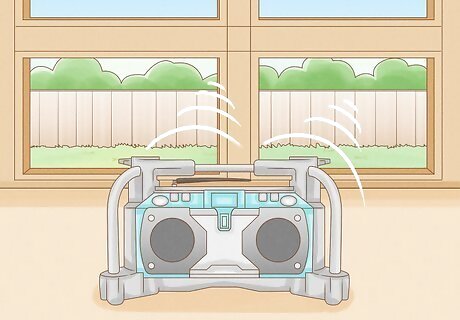
Repeat the process if squirrels ever come back. Some stubborn squirrels may require you to use a combination of techniques, like playing a radio non-stop and introducing predator urine, before your home is inhospitable enough to drive it away. If after two or three attempts the squirrel remains, it may be time to call a pest control expert.
Dealing with Babies
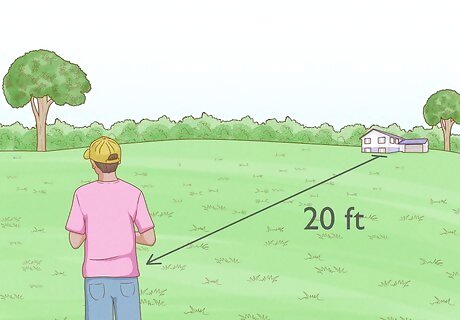
Let the squirrels be if there are babies in your house. Even if you evict a mother squirrel from your home, she will expend every effort to get back to her young if her babies are still trapped or nested inside. So, whatever you do to get her out, she’s just going to find a way back in. Beyond this, a mother squirrel that fears for her young will be more likely to attack. Just wait a few weeks for the squirrels to grow up and leave. To check for young squirrels: Search 20 ft (6.1 m) around the area where you’ve found the squirrel. Make some noises and then be silent. You should hear chittering noises from the young squirrels in response. If you really want the babies gone, you must contact a professional wildlife service that is licensed to handle them.
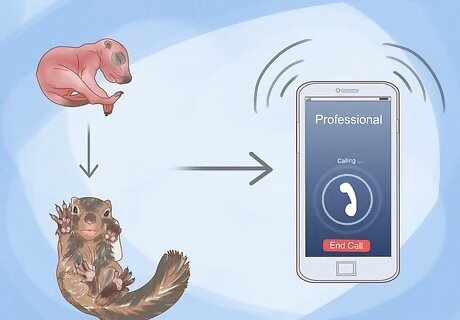
Allow young squirrels to mature before evicting them. Relocating a squirrel family can be taxing on the health of its members, and the young might not survive for long outside of the safety of the nest. If you are certain there are baby squirrels in your home, call a professional or just wait a few weeks for the squirrels to leave. Baby squirrels only take a few weeks to grow large enough to survive without a mother. Waiting is the most humane way of getting rid of young squirrels.
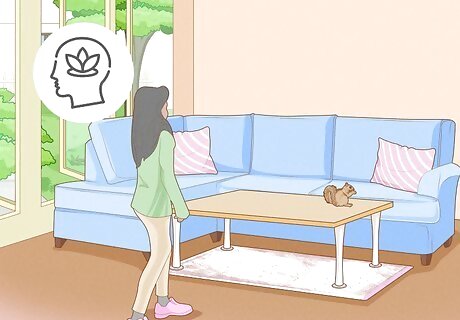
Stay calm and recognize that squirrels are terrified of you. A squirrel, much like most wild animals, is just as scared of you as you may be of it. In fact, squirrels are especially not tough—this squirrel is likely horrified. As much as you want the squirrel out of your home, the squirrel's primary goal is also to get out of your house and back to a familiar environment. Animals have a similar anxiety response to humans and respond aggressively to perceived threats to safety. By staying calm, you will prevent the trapped squirrel from having a severe aggressive response. The squirrel is likely to be erratic since it is unsure what to do in the foreign environment of your home. Additionally, a squirrel, on very rare occasions, can be rabid, so avoid getting closer than you have to.




















Comments
0 comment